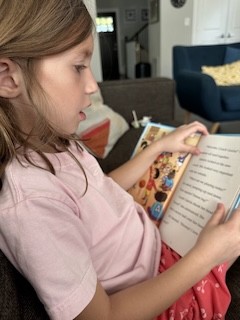Teacher question:
Middle school reading scores are either stagnating or dropping in my state, and they are looking at things they can do to help students improve. I’ve read the materials on the need for kids to reach a certain level of decoding to succeed in the upper grades. What do we do from here? What interventions should schools/states add to help these kids catch up on what they missed?
Shanahan responds:
The most likely reason middle school scores are down in your state probably has little to do with phonics instruction. Most phonics is provided in grades K-2. Doing a better job with that at times seems to have improved reading scores in grades 3 or 4, and that’s good. However, over the past 50+ years, higher fourth grade scores have never translated to higher eighth grade reading achievement. The theory that a better start allows greater later progress not only has not been proven, but it flies in the face of almost all national NAEP data and state data from around the country.
I’m very pro-phonics and there are older kids who may benefit from some form of word analysis instruction in the upper grades (Shanahan, 2024). Research does show that some older kids are so low in decoding that it appears to prevent learning progress in middle school or high school (Magliano, Talward, Feller, Wang, O'Reilly, & Sabatini, 2023; Wang, Sabatini, O’Reilly, & Weeks, 2019). But we have no data showing how to address those needs successfully with older students (Shanahan, 2024).
I think it’s a good idea to try to figure out what those missing skills may be and how best to address them but making that my state policy for improving reading achievement wouldn’t be the direction I’d go. I prefer greater certainty than that.
I’d also point out that prior to COVID your upper grade reading scores weren’t that terrific in the first place. Just trying to get back to where you were would not be the best thing for kids either. There’s work to be done.
So, what could your state do?
I’d recommend several things. For instance, I think it should make a serious effort to increase the amount of reading and writing instruction in grades 3-8. I’d want to make sure that kids are getting a full two hours a day of literacy teaching. Some schools do that now, but there’s a great deal of variation in that. Some schools cut back on that teaching at the end of third grade, and some do so in grade 5. It’s a mistake whenever it happens.
Even when schools schedule that kind of time, their teachers do not always use it wisely to improve students’ reading ability. Imposing requirements is easy. Making sure that teachers know how best to use that time requires more effort.
For example, that instruction should include substantial amounts of word instruction, including vocabulary, morphology, and spelling – and some of those advanced decoding skills that are part of that decoding threshold (e.g., multi-syllable words, exceptional spelling patterns).
Text reading fluency instruction needs attention. That too often stops when kids leave the primary grades, even though fluency development continues for most kids at least through grade 8.
And, of course, explicit teaching of reading comprehension and writing both should be emphasized as well.
Another way the schools undermine the effectiveness of their reading instruction is teaching with the wrong texts. For 80 years, teachers have been told to teach with books at students’ “reading levels.” That means that fifth grade students, for instance, may be taught with fourth, third, or even second grade books. Research shows that to be a bad idea (Shanahan, 2025) – and yet, most teachers say that is how they teach.
Because teaching with below grade texts has been recommended practice for so long and so universally, most teachers have never received any training in how to teach with more challenging books. The same is true for science and social studies teachers, which often causes them to avoid textbooks, further hampering kids’ reading growth (Griffith & Duffett, 2018; Kaufman, Opfer, Bongard, Pane, & Thompson, 2018). Teaching students with below grade books ensures that they never catch up. I guess that’s why the only schools that increase their struggling students’ achievement eschew those practices (Barshay, 2024; The New Teacher Project, 2024).
The kind of phonics instruction that you asked about does have a place, even if we’re uncertain about how best to handle that. Such teaching belongs in the Tier 2 category – extra instruction for remedial students outside the regular classroom. Identifying kids who fail to reach the decoding threshold makes sense. So is providing targeted instruction aimed at improving more advanced word reading skills. Too often when remedial programs focus on phonics, they just keep teaching and reteaching those basic decoding skills – not what the research says is missing.
To make those kinds of literacy policies work, your state should invest in professional development for teachers and principals in grades 3-8. Many states have made such investments in their children in grades K-2 – they’ve beefed up education policies and spent money on making sure that those teachers know what their students need and how to teach those things.
Those kinds of programs and policies have often been successful at achieving somewhat higher early reading scores. It’s time your state, and others, did more than just giving young kids a better start. It should build on those promising beginnings with a serious commitment to graduating students from high school with sufficient literacy proficiency.
A job half done is, well, half done, or flawed, unfinished, deficient, defective. You’re correct that we can do better. Our kids deserve that.
References
Barshay, J. (2024, September 30). The habits of 7 highly effective schools. Hechinger Report. https://hechingerreport.org/proof-points-tntp-effective-schools.
Griffith, D., & Duffett, A. (2018). Reading and writing instruction in America’s schools. Washington, DC: Thomas Fordham Institute.
Kaufman, J. H., Opfer, V. D., Bongard, M., Pane, J. D., & Thompson, L. E. (2018). What teachers know and do in the Common Core era: Findings from the 2015-2017 American Teacher Panel. Santa Monica, CA: Rand Corporation.
Magliano, J. P., Talward, A., Feller, D. P., Wang, Z., O'Reilly, T., & Sabatini, J. (2023). Exploring thresholds in the foundational skills for reading and comprehension outcomes in the context of postsecondary readers. Journal of Learning Disabilities, 56(1), 43–57.
National Assessment of Educational Progress (NAEP). (2022). NAEP Long-term trend assessment results: Reading and mathematics. Washington, DC: U.S. Department of Education. https://www.nationsreportcard.gov/ltt/?age=9
Shanahan, T. (2024). What role, if any, should phonics play in a middle school or high school? The answer may surprise you. Journal of Adolescent & Adult Literacy, 68(4), 325-329. https://doi.org/10.1002/jaal.1387
Shanahan, T. (2025). Leveled reading, leveled lives. Cambridge: Harvard Education Press.
The New Teacher Project. (2024). Paths of opportunity: What it will take for all young people to thrive. New York: TNTP. https://tntp.org/publication/paths-of-opportunity.
Wang, Z., Sabatini, J., O’Reilly, T., & Weeks, J. (2019). Decoding and reading comprehension: A test of the decoding threshold hypothesis. Journal of Educational Psychology, 111(3), 387-401.
LISTEN TO MORE: Shanahan On Literacy Podcast







Comments
See what others have to say about this topic.